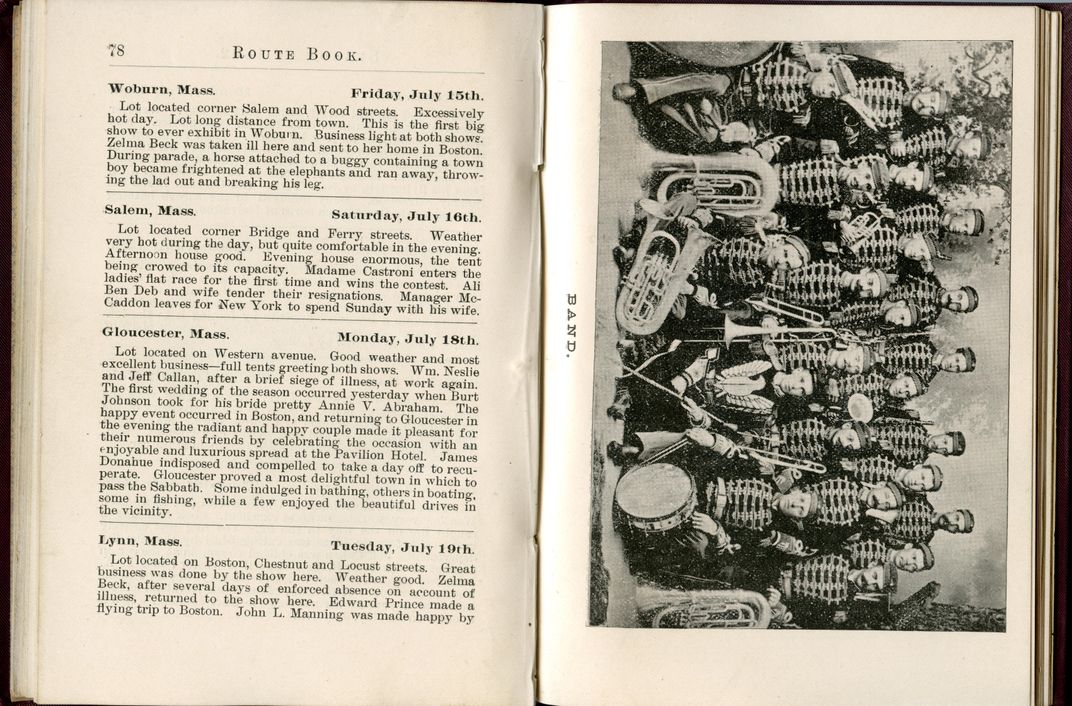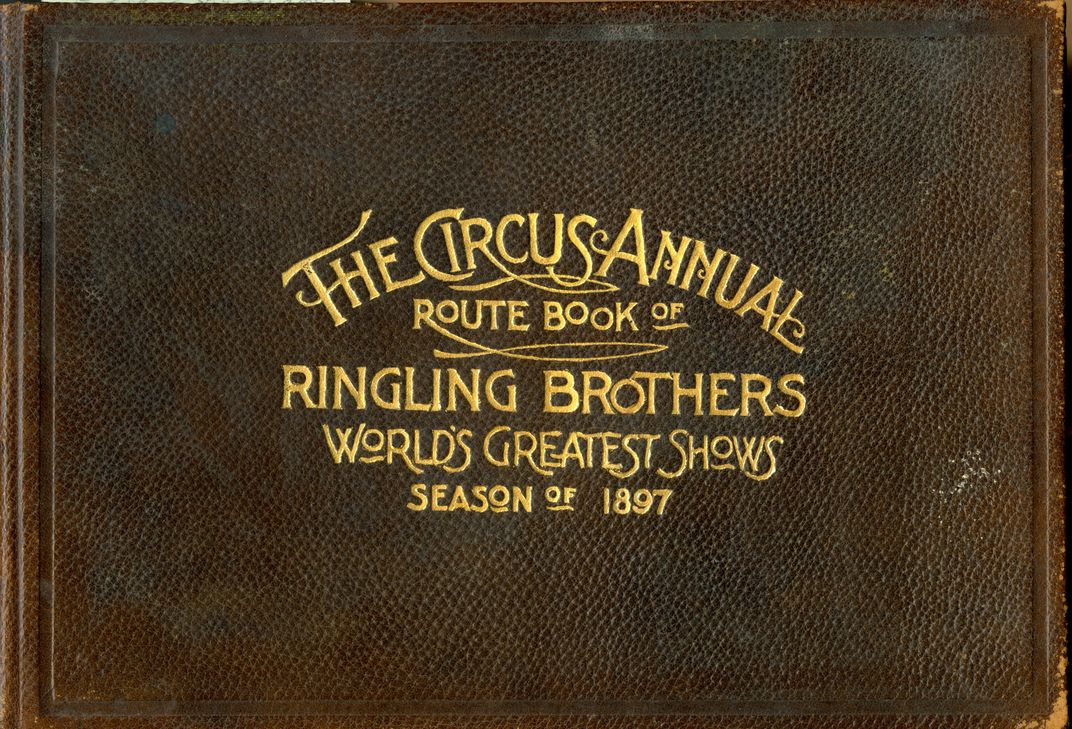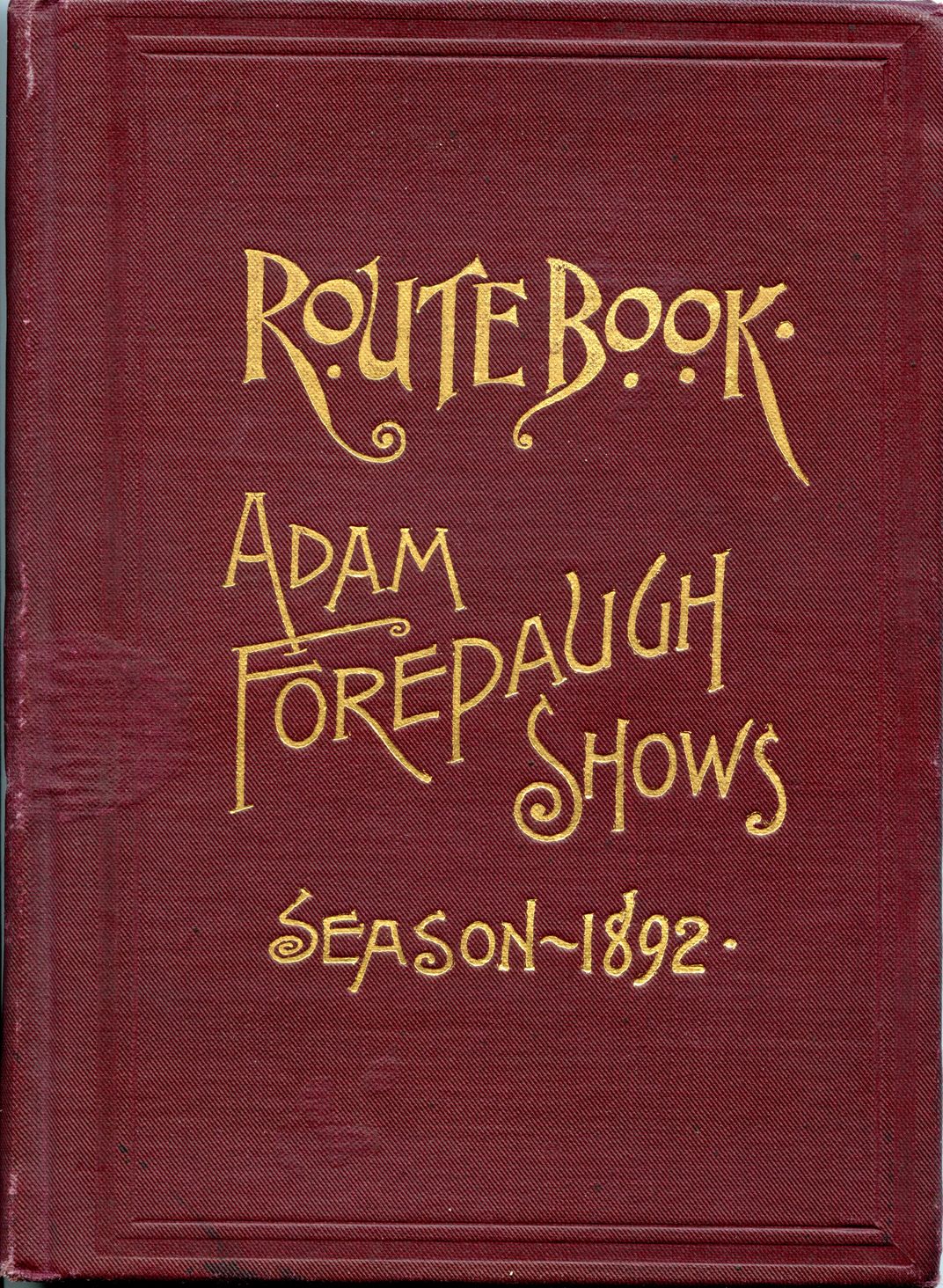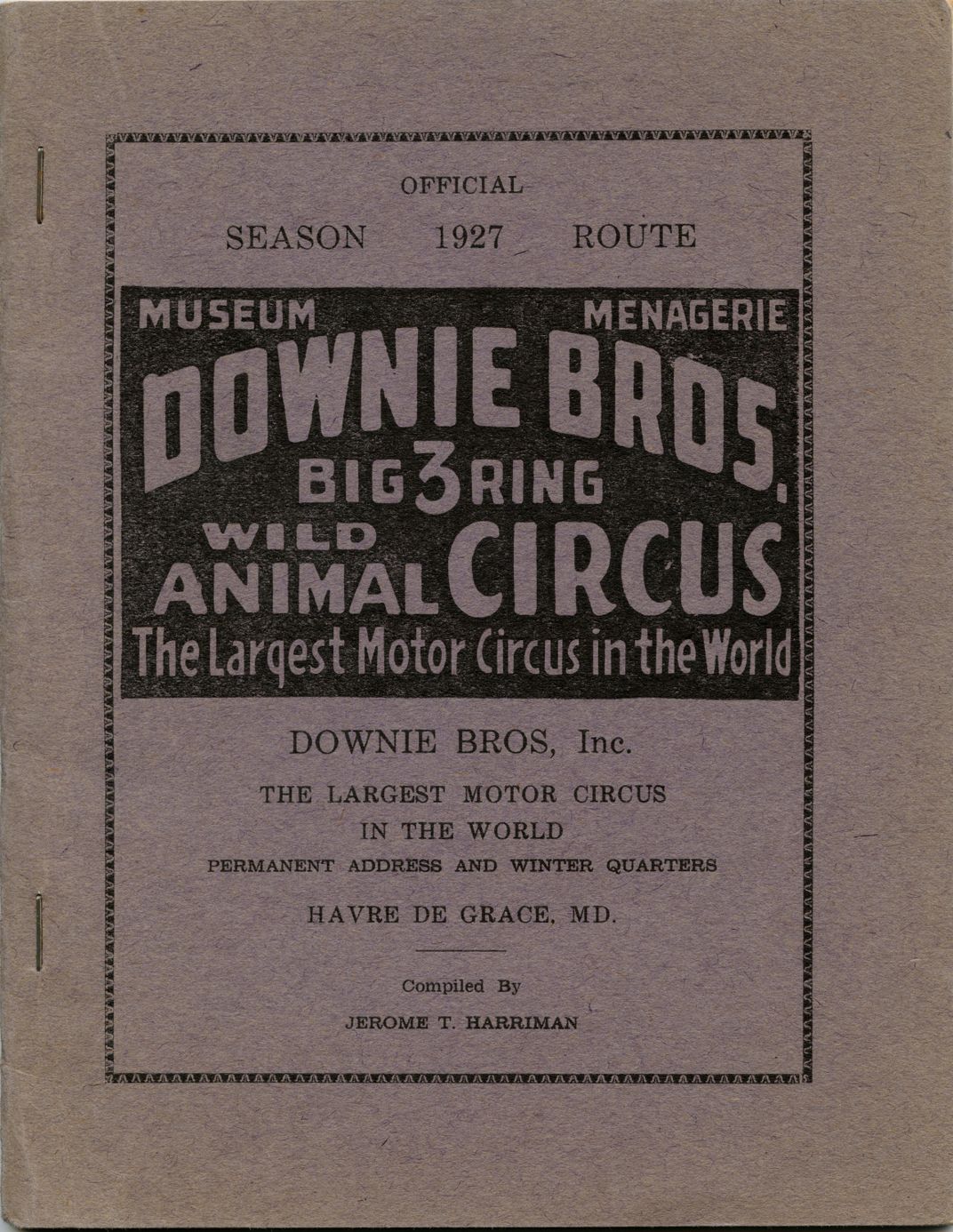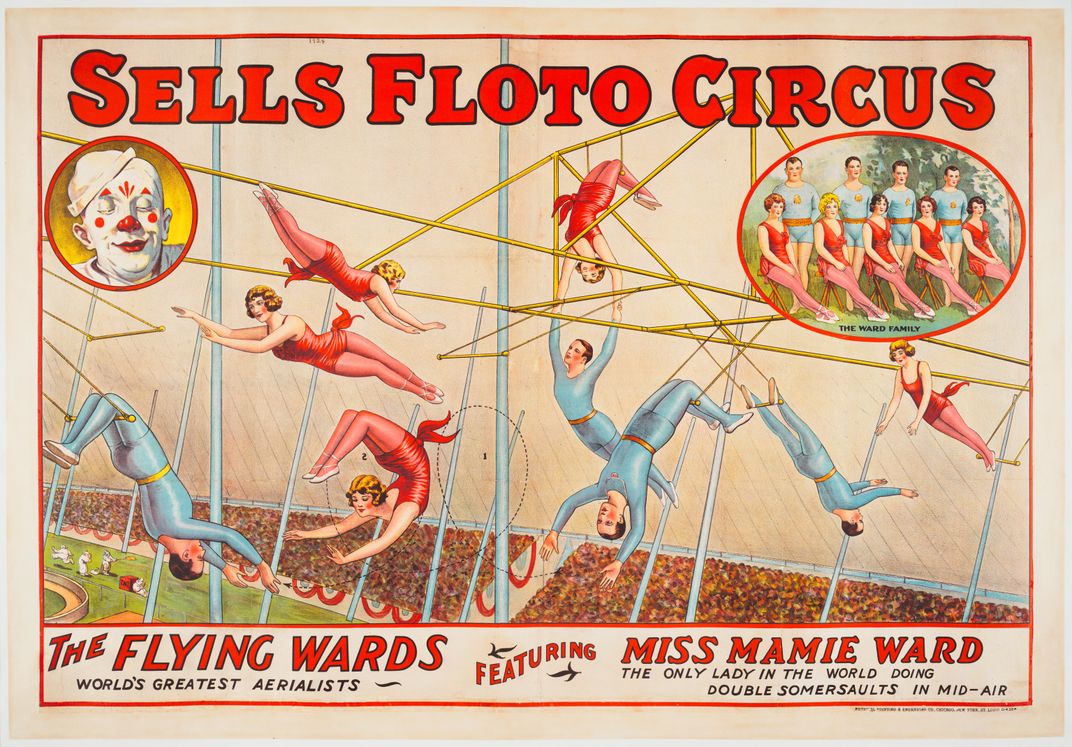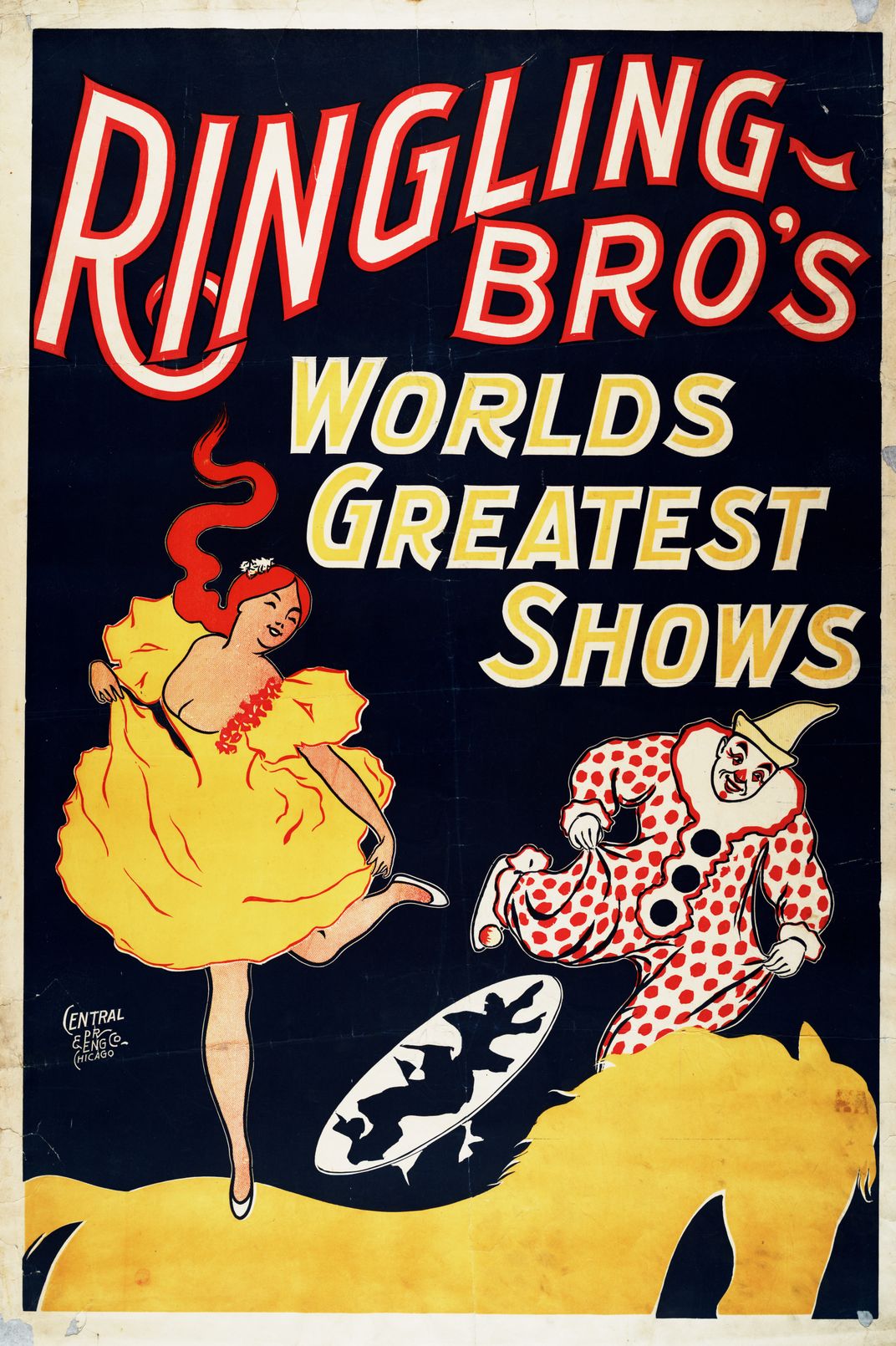This Archive Is Digitizing the History of the Circus
In a bid to preserve circus culture, Illinois State University’s Milner Library is making more than 300 circus route books available online
/https://tf-cmsv2-smithsonianmag-media.s3.amazonaws.com/filer/3d/2c/3d2cec83-70f5-4cd3-a92b-6dcc6eb5302f/bsp0163_-_art_and_antoinette_concello.jpg)
For years, Illinois State University’s Milner Library has made it its mission to preserve the history of the circus. Its massive Circus and Allied Arts Collection includes trapeze fly bars, leotards, thousands of promotional posters and over 10,000 brightly colored Kodachrome slides of performers. The oldest book in its archive dates back to the early 16th century—a 1521 book on how to train your horse to please the court.
Now, the library has received $268,000 grant from the Council on Library and Information Resources to digitize more than 300 circus route books dating from 1842 to 1969. The three-year project will ensure that circus history is preserved for future generations, the university announced in a press release.
Circus route books contain a treasure trove of historical data. They were typically produced after a season ended, Maureen Brunsdale, Milner Library’s head of special collections and rare books, tells Smithsonian.com. The booklets record the order of acts, how large the shows were, not to mention the names of workers and performers involved in the productions (from the president to the elephant boss). They also chronologue some deeply personal anecdotes from life in the circus. Brunsdale recalls one letter printed in a route books where the wife of a performer laments about her husband’s death after he broke his neck following a horrible fall in Boston in 1933.
“It seeps into your soul, holding that letter,” Brunsdale tells Smithsonian.com.“[The route books] gives us a real snapshot of what the circus looked like."
In order to accomplish this digitization feat, the library will partner with Circus World in Baraboo, Wisconsin, and the Ringling Museum of Art in Sarasota. That makes this the first collaboration between “the Big Three of circus collections,” associate dean at Milner and project coordinator Dallas Long tells Lenore Sobota of The Pantagraph.
Between the three institutions, there are a total of 315 route books of circus shows both large and small (including all the route books published for the Ringling Bros. and Barnum & Bailey Circus), although researchers know of 400 in existence, according to Brunsdale. Once digitized, researchers will be able to look up specific names, circus shows, and towns, Sobota reports.
Milner Library alone has approximately 8,000 books on the circus in its collection—potentially more than any other place on the planet, Brunsdale tells Smithsonian.com. The reason for the library's massive collection in part has to do with Illinois' deep ties to circus performers. In the 1870s, a small community of trapeze artists began utilizing barns in the Bloomington area to set up rigging and practice their craft. Soon Bloomington was given the moniker of “the trapeze capital,” which it held until the 1950s when the trapeze scene moved to Florida, Brunsdale says.
/https://tf-cmsv2-smithsonianmag-media.s3.amazonaws.com/filer/ec/59/ec5942eb-5901-4916-a732-bf700644c5ca/otto_ringling_letter_to_brothers_proposing_purchase_of_barnum_and_bailey_-_1907.jpg)
One particularly rare document in the library’s collection is a handwritten letter from Otto Ringling. In the 1907 text, he encourages his siblings to buy the Barnum & Bailey Circus despite America’s economic recession. Though he acknowledges the risk involved with the acquisition, he argues that running both circuses simultaneously would make their business “too big to fail,” says Brunsdale.
That correspondence marks the beginning of what would eventually become Ringling Bros. and Barnum & Bailey Circus when the two shows merged in 1919.
“In those sorts of letters you’re seeing and learning about American history through the lens of circus. How cool is that?” Brunsdale tells Smithsonian.com.
After 146 years, Ringling Bros. and Barnum & Bailey Circus—sloganed as “The Greatest Show on Earth”—will hold its last performance on May 21, reports N.R. Kleinfield for the New York Times. The news came after Milner Library applied for grant.
“Many people associate Ringling Bros. and Barnum & Bailey Circus with circus,” Brunsdale tells Smithsonian.com. “I think in the public’s mind there’s this idea that since they are closing that it’s not going to exist, which means our job in digitizing their history becomes even more important.”
